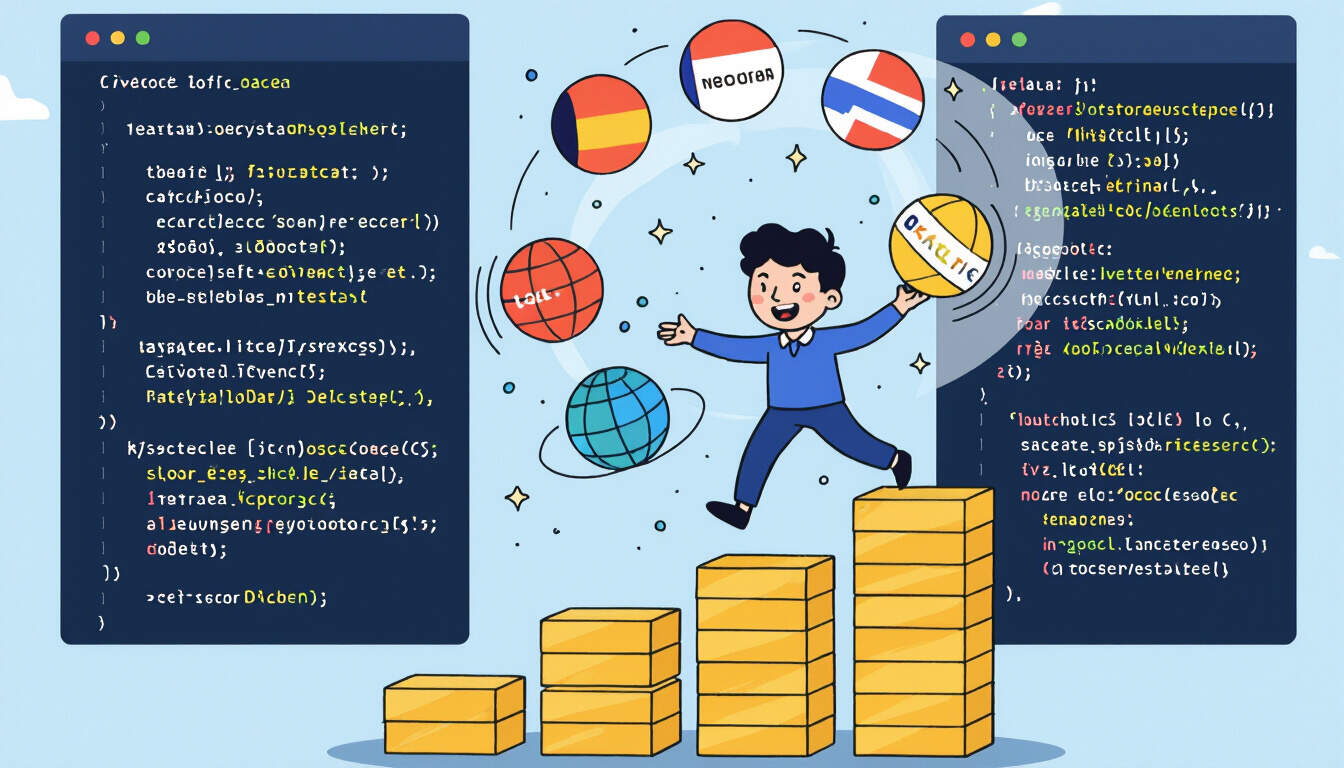SaaS Localization Techniques for Solo Developers
 by Marlene Keeling
by Marlene Keeling
Explore essential techniques for localizing SaaS applications, helping solo developers reach global audiences with practical steps and examples. Learn how to adapt software for different languages and cultures to boost user engagement and growth.

SaaS localization involves adapting software for various languages and regions, making it accessible to users worldwide. This process is key for solo developers aiming to expand their reach beyond local markets. SaaS localization can significantly increase user adoption by addressing language barriers early in development.
For solo entrepreneurs, implementing these techniques means building flexible applications from the start. Start by planning for multiple languages in your architecture. This includes using string resources that can be easily swapped out. For instance, separate language files allow updates without altering core code, keeping maintenance simple.
One effective technique is internationalization, which prepares your SaaS app to handle different locales. Begin with selecting a framework that supports this feature, such as React or Vue.js for front-end work. Once set up, you can add support for date formats, number styles, and currencies that vary by region.
Internationalization often starts with identifying strings in your code that need translation. Create a system where all user-facing text is stored externally. This way, translators can work on these files independently. Real-world examples show success here; a solo developer of a project management tool adapted it for Japanese users by converting dates to the local calendar system, leading to a 30% increase in sign-ups from Asia.
Next, focus on translation methods. Manual translation provides accuracy but takes time, while automated tools offer speed for initial drafts. Use services like Google Translate API for quick results, then refine with human review. For a solo SaaS project, balance cost and quality by starting with high-traffic languages like Spanish or French.
Consider cultural adaptation as part of your techniques. This goes beyond words to include images, colors, and layouts that resonate locally. For example, an e-commerce SaaS might change color schemes to align with cultural preferences in the Middle East. By testing these changes with beta users, you ensure the app feels native.
Step-by-Step Guide to Implementing Localization
Follow these steps to integrate localization into your solo SaaS architecture:
- Assess your current setup: Review your codebase for hard-coded strings and replace them with variables.
- Choose tools: Select libraries like i18next for JavaScript projects to manage translations efficiently.
- Gather content: Compile all text that needs translation, including buttons, menus, and error messages.
- Translate and test: Work with freelance translators and test the app in different languages to catch issues.
- Deploy updates: Roll out localized versions gradually, starting with one region to monitor feedback.
In practice, a developer building a fitness tracking SaaS used this guide to add support for German and Italian. They reported fewer support tickets related to language confusion, highlighting the value of thorough preparation.
Handling right-to-left languages, such as Arabic, requires additional attention. Adjust your CSS and layout to accommodate text direction. Real examples from solo developers show that overlooking this can lead to poor user experience, so include it in your planning.
Performance is another aspect. Localized apps might load more data, so optimize by lazy-loading language files. This ensures your SaaS remains responsive across devices. For instance, compressing translation files can reduce load times without sacrificing functionality.
Finally, measure the impact of your efforts. Track metrics like user retention and conversion rates in localized markets. Tools like Google Analytics help here, providing insights into how well your adaptations are performing.
By applying these techniques, solo developers can create SaaS products that appeal to a global audience, fostering growth and sustainability.
